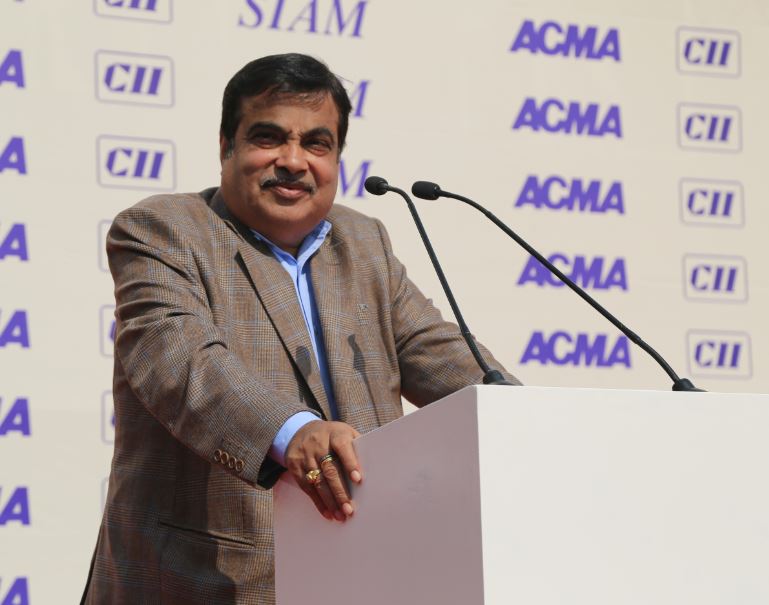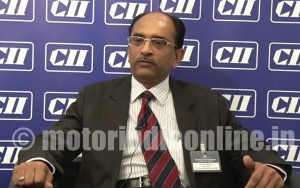The 13th Auto Expo – Motor Show 2016, held at India Expo Mart, Greater Noida, witnessed a total of over six lakh visitors with around 95,000 attending the final day. The organisers claim that the event which witnessed saw a slew of product unveils, concept vehicle showcases and launches was a runaway hit. Mr. Anant Geete, Minister for Heavy Industries and Public Enterprises, along with Mr. Nitin Gadkari, Minister of Road, Transport and Highways, officially inaugurated the Auto Expo – The Motor Show 2016 on February 4. In the presence of the office bearers from Confederation of Indian Industries (CII), Automotive Components Manufacturers’ Association (ACMA) and the Society of Indian Automobile Manufacturers (SIAM). This year’s edition of Auto Expo, which was open to the public during February 5-9, had the participation of 65 manufacturers from across the globe exhibiting their products.

While passenger vehicles and two-wheelers remained the primary crowd-pullers, commercial vehicle manufacturers also proved their mettle, as they put on a wide array of products for display. The main themes around CV displays at the show were efficiency and use of alternate fuels for lower emissions. Some of the prominent OEMs present at the Expo were Tata Motors, Mahindra & Mahindra, Ashok Leyland, Volvo Eicher CV (VECV), Force Motors, Scania CV India, JBM Auto Ltd and SML Isuzu. Most of them had a fair mix of unveils and new roll-outs for the domestic market, as well as showcasing technologies around fleet management and lowering the total cost of ownership (TCO).
Mr. Vishnu Mathur, Director General, SIAM, expressing his delight over the success of the show said: “We believe the Auto Expo has successfully evolved from being just another exhibition of vehicles to a showcase of Indian manufacturing strength and technological capabilities. With over 108 new products being launched and unveiled and over 6,01,914 footfalls received over the last one week, we believe this Expo will strengthen the belief of our manufacturers in the Indian automotive industry. We would like to thank all those who visited the Motor Show as well as all our exhibitors, partners and the media. They are the ones who have made this show a success and helped us reach the desired level of excellence.”

Coinciding with Auto Expo, The Auto Trade Dialogue facilitated better understanding and appreciation of the needs of the automotive industries in individual countries and regions. The international dinner in the evening saw participation of world leaders from Japan, Korea, the UK, the US and Germany, apart from Indian CEOs. Also, on the sidelines of Auto Expo – the Motor Show 2016, the 10th Styling and Design Conclave, took place alongwith the automotive design challenge. The conclave discussed the future of design and styling in the automotive industry with stress on the Indian automotive industry. The first prize was bagged by a student from MIT, Pune, while the second prize went to DSK Rubika followed by NID, Ahmedabad.
It is widely believed that Auto Exposition this time is a precursor of the heady days in the country’s $68 billion automotive industry, which is reeling under three years of flat or negative sales growth.
CV Industry to witness upturn
While the PV industry has already witnessed an uptick in volumes, the country’s market for medium and heavy commercial vehicles – a barometer of economic activity – is set to create a new benchmark. Taking the economic growth into consideration, CV OEMs are optimistic that growth will come their way this year, across M&HCVs and LCVs, with improved GDP to boot. Sales of heavy-duty trucks will gain a massive upturn aided by replacement demand and a pick-up in movement of bulk cargo like coal, steel, cement, etc.
Sales of commercial vehicles, comprising medium and heavy commercial vehicles (M&HCVs) and light commercial vehicles (LCVs), grew by 7.37 per cent to 650,993 units in 2015 (2014: 606,255 units). Industry observers reckon that sales in the M&HCV segment in 2016 are projected to surpass the earlier peak of 240,000 units registered in 2011, bolstered by unprecedented thrust on infrastructure spending. While the LCV industry is yet to see green shoots, the rate of degrowth has moderated phenomenally.
VE Commercial Vehicles Chief Executive Vinod Aggarwal said: “Last year has been pretty fine when it comes to the overall growth in the industry. With infrastructure-centric policies likely to get implemented in the coming financial year, we do see an all-time high numbers being generated.”
Current scenario
SIAM’s Q3 review has anticipated that 2015-16 will see M&HCV (cargo carrier) sales continue to grow in double digits due to an improvement in industrial GDP and higher replacement demand. Furthermore, regulatory changes like ABS and Speed Limiter implementation, NGT tribunal and the later SC directive resulted in the preponement in purchases thereby boosting volumes.
The tipper market has also revived with the expeditious construction of national highways, coupled with the resumption in mining of coal in certain parts of the country. For the bus market, there will be a recurrent demand for light buses from schools, MNCs and educational institutes and some incremental volumes generated in the medium and large buses underpinned by the improving profitability of operators due to low diesel prices. However, the dark spot is the light goods carrier market, which will see flat growth in sales due to slow revival in private final consumption expenditure.
Future outlook
The improvement in vehicle offtake is happening after most large fleet operators, hurt by economic slowdown, put on hold expansion plans. In addition to the Government mandated rules, blanket ban on commercial vehicles older than 10 years in the National Capital Region have proved to be a boon for commercial vehicle makers, as these developments triggered demand for new vehicles. Moreover, Government efforts to reduce overloading, leading to new products with enhanced capacities, will also be an important growth driver.
